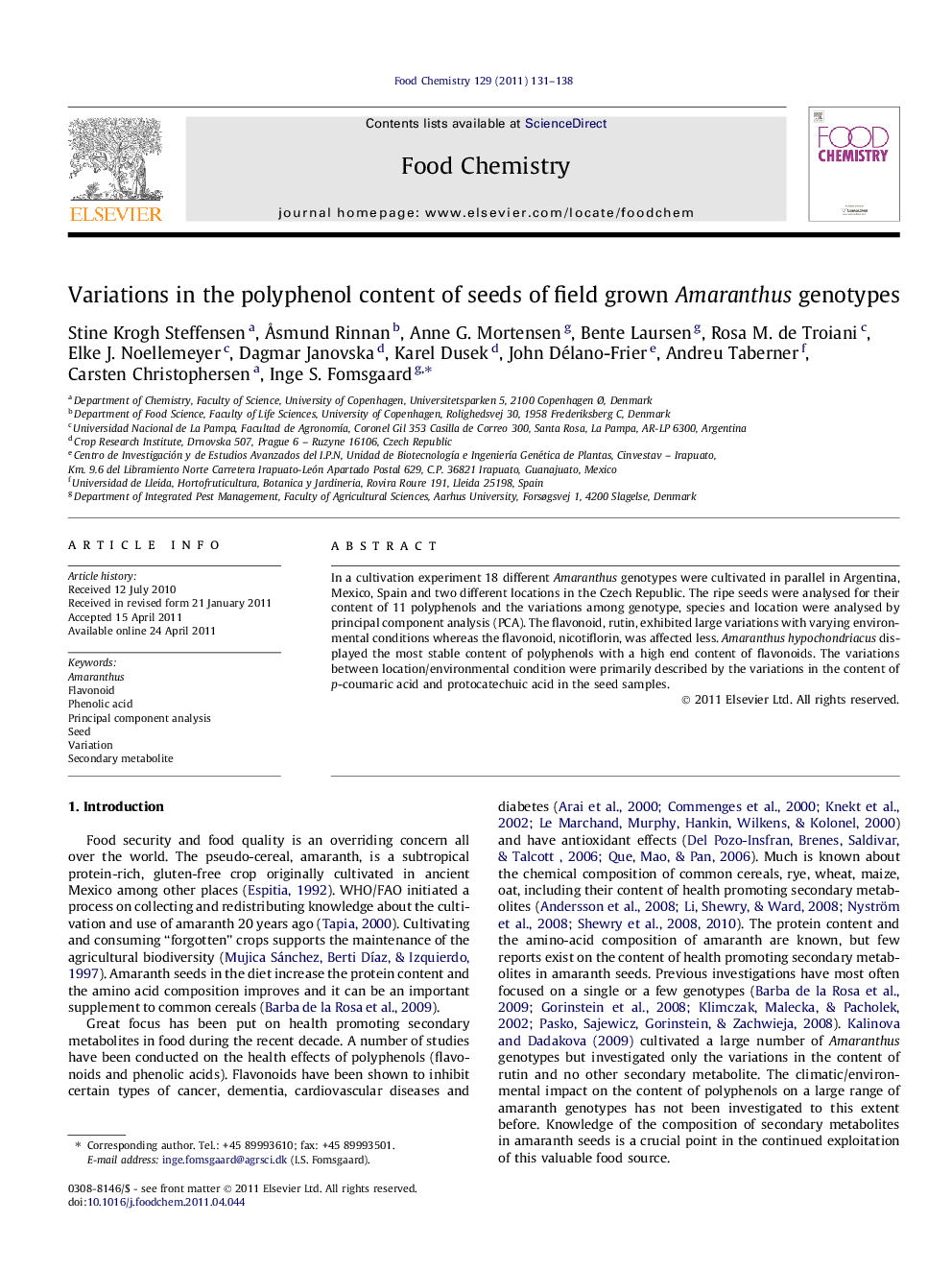| Article ID | Journal | Published Year | Pages | File Type |
|---|---|---|---|---|
| 1188502 | Food Chemistry | 2011 | 8 Pages |
In a cultivation experiment 18 different Amaranthus genotypes were cultivated in parallel in Argentina, Mexico, Spain and two different locations in the Czech Republic. The ripe seeds were analysed for their content of 11 polyphenols and the variations among genotype, species and location were analysed by principal component analysis (PCA). The flavonoid, rutin, exhibited large variations with varying environmental conditions whereas the flavonoid, nicotiflorin, was affected less. Amaranthus hypochondriacus displayed the most stable content of polyphenols with a high end content of flavonoids. The variations between location/environmental condition were primarily described by the variations in the content of p-coumaric acid and protocatechuic acid in the seed samples.
► We sample amaranth seeds from 18 genotypes grown in Spain, Argentina, Mexico and the Czech Republic. ► We quantify polyphenols in the seeds using accelerated solvent extraction and LC-MSMS analysis. ► PCA analysis shows higher impact of environment than of genotype on the polyphenol content. ► The content of rutin exhibits strong influence of both environment and genotype.
